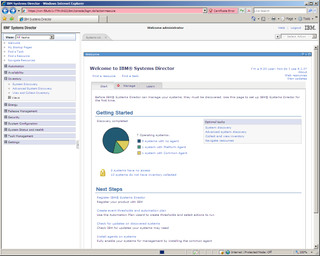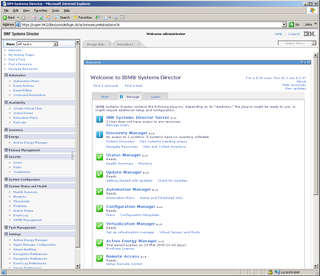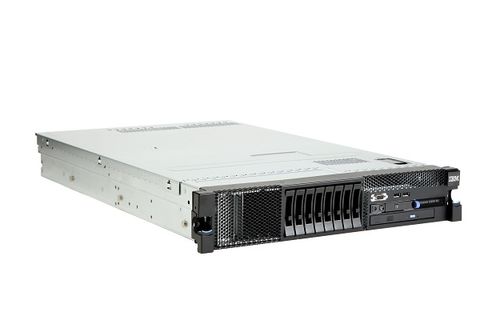The results of the network discoveries are viewed from the Systems Director home page and options are provided for deploying agents to IBM and non-IBM systems. These enable you to collect inventory data, execute tasks such as file transfers and run remote control sessions using RDP or RealVNC.
IBM follows HP's power management initiatives as you can upgrade Systems Director with the new Active Energy Manager plug-in. This interacts with the server's IMM and provides power capping functions along with trend graphs of power consumption and system temperatures over time.

The new Systems Director is a vast improvement on its predecessor and easy to deploy and use.
The x3650 M2 is well designed and built and comes a very close second to HP for storage capacity as the main hard disk bay supports up to eight hot-swap SFF hard disks. Remove the small filler panel alongside and you can add four more drives. The DL380 G6 still wins out as it handle 16 SFF drives, whereas Dell's PowerEdge R710 can only manage eight.
Expansion options for the front drive bay are extensive. IBM offers a four-bay simple swap module or you can go for the 4-Pac HHD hot-swap option kit, which includes a SAS expander enabling all 12 bays to be managed by one controller. Moving the bays across to the right also makes room for an optional SAS tape drive.

Systems Director provides a heap of general systems management tools including inventory and remote access.
RAID card choices look good as the base model comes with a dual-port ServeRAID PCI-e card fitted behind the bay and supporting stripes and mirrors. This can be upgraded with cache memory and support for RAID-5 and 6 arrays and IBM offers a battery backup pack as well. The review system included the 256MB cache and BBU upgrade but you can go up to 512MB cache.
Virtualisation gets more than a passing nod as the riser card for the RAID controller has an internal USB port, which can be used to add a bootable storage device for loading VMware ESXi 3.5. HP and Dell do score better here as both their 2U rack servers have internal SD card slots for this function.
Dave is an IT consultant and freelance journalist specialising in hands-on reviews of computer networking products covering all market sectors from small businesses to enterprises. Founder of Binary Testing Ltd – the UK’s premier independent network testing laboratory - Dave has over 45 years of experience in the IT industry.
Dave has produced many thousands of in-depth business networking product reviews from his lab which have been reproduced globally. Writing for ITPro and its sister title, PC Pro, he covers all areas of business IT infrastructure, including servers, storage, network security, data protection, cloud, infrastructure and services.


